|
|
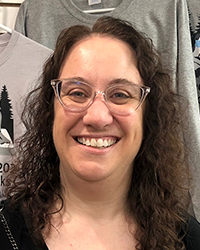 Jen Jen
|
 |
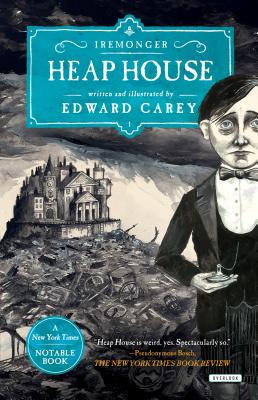 |
|
Heap House, Foulsham, and Lungdon
Edward Carey
The only redeeming thing about having Influenza A was that I was able to read. (If a person is too sick to read, that’s hell in my book.) Those who know me know I can gush over a British-born illustrator/author named Edward Carey (Little, The Swallowed Man, Edith Holler, Plagues and Pencils.) About 10 years ago, Carey released a children’s series called The Iremonger Trilogy. Since I could, I binged all three while sick. Unfortunately, these books have gone out of print in the U.S., so I ordered used copies. The audio books *are* still available from libro.fm and I do recommend the audio, although you would hate to miss Carey’s illustrations. About 10 years ago, Carey released a children’s series called The Iremonger Trilogy. Since I could, I binged all three while sick. Unfortunately, these books have gone out of print in the U.S., so I ordered used copies. The audio books *are* still available from libro.fm and I do recommend the audio, although you would hate to miss Carey’s illustrations.
So, what are these books about? I’ll focus on the first one so as to not spoil the other two. As per usual with Edward Carey, the characters and story are quirky and yet heartwarming. The books are set during the Victorian era in England. The Iremonger family lives in a sprawling mansion—and when I say, family, I mean the WHOLE extended family. The family made its fortune from scrap, salvage, and garbage. Every family member is presented with an object, his/her “birth object,” and must keep it on his/her person at all times. For our hero, Clod (the Iremongers all have names that sound very similar to mainstream names, but are just a bit off) this isn’t too much of a hardship— his birth object is a bath plug (yes, really.) Clod’s grandmother was less fortunate; she was presented with a large piece of furniture at birth and so is pretty much confined to her bed/bathroom. Clod has an unusual gift that appears occasionally in the Iremonger family: he can hear birth objects speak their names. Like most wealthy families in that day and age, the Iremongers have hired help. An orphan named Lucy with bright fiery red hair and a mouth as loud (obnoxious) as her hair, is hired by the Iremongers. She does not fit in particularly well, but she does happen upon Clod by accident and the two become friends, which is very much NOT ALLOWED. Lucy is Clod’s only friend who is not a family member. He spends a fair amount of time with his cousin Tummis and tries to avoid another cousin named Moorcus. At times, he is forced to socialize with his betrothed, a cousin named Pinalippy. When a member of the Iremonger family turns 16, s/he marries another Iremonger cousin. Lucy and Clod begin to stumble on some family secrets and the adventure begins……. As always with Carey, his books include his own illustrations. Heap House includes endpapers with a map of the Iremonger Mansion, which is helpful. (The endpapers in book 3 include a family tree, but don’t peek at it until you’ve read the first two books, or you’ll hit some spoilers). his birth object is a bath plug (yes, really.) Clod’s grandmother was less fortunate; she was presented with a large piece of furniture at birth and so is pretty much confined to her bed/bathroom. Clod has an unusual gift that appears occasionally in the Iremonger family: he can hear birth objects speak their names. Like most wealthy families in that day and age, the Iremongers have hired help. An orphan named Lucy with bright fiery red hair and a mouth as loud (obnoxious) as her hair, is hired by the Iremongers. She does not fit in particularly well, but she does happen upon Clod by accident and the two become friends, which is very much NOT ALLOWED. Lucy is Clod’s only friend who is not a family member. He spends a fair amount of time with his cousin Tummis and tries to avoid another cousin named Moorcus. At times, he is forced to socialize with his betrothed, a cousin named Pinalippy. When a member of the Iremonger family turns 16, s/he marries another Iremonger cousin. Lucy and Clod begin to stumble on some family secrets and the adventure begins……. As always with Carey, his books include his own illustrations. Heap House includes endpapers with a map of the Iremonger Mansion, which is helpful. (The endpapers in book 3 include a family tree, but don’t peek at it until you’ve read the first two books, or you’ll hit some spoilers).
|
|
|
|
|
|
|
|
| |
|
|
|
|
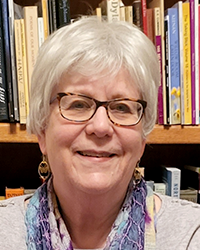 Sally Sally |
|
|
I’ve saved my last two recommendations from Afternoon In for this newsletter, since we’ll be discussing them at our retreat later in April.
|
| |
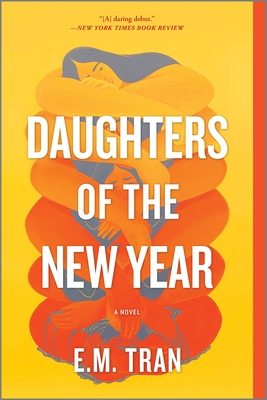
|
 |
Daughters of the New Year
E.M. Tran
Do you know your sign? Mine is Cancer, and when we got a physical newspaper, I liked to read my horoscope in the evening and compare it to the events of the day. It was entertaining, nothing more.
For Xuan Trung (Zwan Trung), the Vietnamese zodiac signs were vitally important. A beauty queen in Viet Nam, she was a refugee after the Fall of Saigon, and at the beginning of the book lived in New Orleans. At the beginning of each year, she was obsessed with predicting the fates of her three daughters through their horoscopes.
Predictably, the daughters had aspirations for themselves totally different from the dreams their parents had for them. The oldest was a successful corporate lawyer who hid her sexuality from her parents. The middle daughter dropped out of college to pursue an acting career. She was a contestant on a reality show similar to the Bachelor, the only Asian on the show. The youngest daughter was good at lots of things, but unable to settle on pursuing any of them.
The first section of the book is set in 2016-1975. Yes, it goes backward in time, and each section reveals events and people which influenced everything that followed. As strange as that sounds, it works.
I don’t know much about Viet Nam, other than my husband was there in 1971-1972, courtesy of the U.S. Army. It was illuminating to learn about the history and culture of the country. I liked following the mother/daughter relationships in the book.
And a little tip: There’s a timeline in the front of the book. Stick a bookmark in that page and refer to it often.
|
| |
|
 |
|
Nonfiction: A Novel
Julie Myerson
Nonfiction was the the most challenging book on my list for Afternoon In. The challenge starts with the title itself: Nonfiction: A Novel. Well, which is it? We’ll come back to that in a bit.
The book is written in stream of consciousness. I don’t always care for that style, but it works in this book and is accessible. It’s written to a young adult daughter by her mother. The mother is addressing the daughter and attempting to understand her and the choices she has made. The daughter is a junkie, addicted to heroin. Her parents are watching powerlessly as she destroys herself.
As she writes, the mother speaks of her difficult relationship with her own mother, who has recently died. She encounters a former lover and has an emotional affair with him. The mother, who is a novelist, is coaching a young writer about the craft. The uneasy relationship she has with her husband is mentioned but not explored.
I found the book to be beautiful and haunting. Usually, I have 3 books going all the time, and when I finish one book I move right on to the next. Not so with this one. I sat with it for several days before starting the next book.
Many of you know I often read the end of a book first. I don’t recommend that with this book. But I do think the last three lines can be an important filter when thinking about or discussing the book.
I said I’d get back to the title of the book. Julie Myerson wrote an earlier book of nonfiction about the drug addiction of her son. So, is this new book fiction or nonfiction? Is it autofiction? These are all possible directions to explore in a discussion of the book.
I think it’s an amazing book, worthy of being read and discussed. |
| |
|
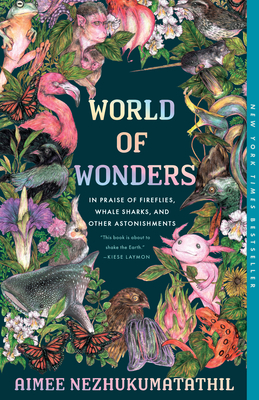 |
|
World of Wonders
Aimee Nezhukumatathil
Are you lucky enough to have memories of seeing fireflies in the evenings as a child? If so, you’ll enjoy reading World of Wonders. If not, you need to read World of Wonders.
Poet Aimee Nezhukumatathil writes about fireflies and many other wonders of nature in this lovely book of essays which is also a coming-of-age memoir.
Nezhukumatathil is the daughter of a Filipino mother and an Indian father. Her family moved often, and frequently hers was the only brown face in her classroom. She learned to turn to nature, enjoying what she found there, but also learning how to fit in while remaining her own strong person.
For example: “If a white girl tries to tell you what your brown skin can and cannot wear for makeup, just remember the smile of an axolotl. The best thing to do in that moment is to just smile and smile, even if your smile is thin. The tighter your smile, the tougher you become.”
She writes of swimming in a tank with whale sharks, of her family’s love of Monarch Butterflies, and of talking about the corpse flower as a way to screen dates.
The writing is beautiful, as you would expect from a poet, the insights thought-provoking, and the exquisite illustrations will add to your delight in this lovely book. And just maybe, when summer comes you’ll find yourself looking for fireflies.
Note: the paperback of this book will be released April 16.
|
|
|
| |
|
|
|
|

Ann |
|
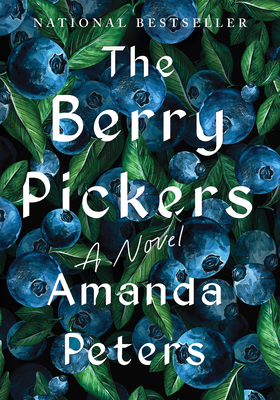
|
|
The Berry Pickers
Amanda Peters
In July 1962, a Mi'kmaq family from Nova Scotia traveled to Maine to work as blueberry pickers. Four-year-old Ruthie, the youngest of the family's five children, disappeared on what began as an ordinary day. After six weeks, and despite an ongoing search, the family returned to their Nova Scotia home without Ruthie. They carried a sense of unending loss that will affect their family forever. Meanwhile, back in Maine, an only child named Norma grows up. As a young child, she had dreams she did not understand and asked questions that her parents avoided answering. Later in life, events disclose the true story of Norma's childhood and lead her to discover her past. The Berry Pickers is a compelling story describing a single decision that forever affects the lives of two families. Once I started reading, I couldn't put the book down.
|
| |
|
|
|
| |
|

Cascade |
|
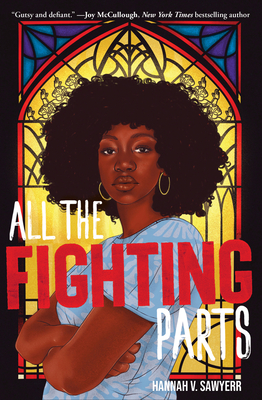 |
|
All the Fighting Parts
Hannah V. Sawyer
This book is the most impactful and well-written YA novel in verse I have read since The Poet X. We follow sixteen-year-old Amina, who is incredibly outspoken, to the point that her verbal outbursts earn her the punishment of mandatory volunteering at church events. After one of these events, a pastor takes advantage of the situation and sexually assaults her. Amina is struck speechless and retreats into herself for the first time in her life. She doesn’t see how anyone will believe or support her if she accuses this beloved community figure of something so heinous. Although this book tackles a heavy topic, I thought the author treated Amina’s story with a lot of tenderness and care and that this technique kept it from becoming graphic or disheartening. Overall, this fictional story is an empowering survivor’s tale appropriate for teens and adults.
|
| |
|
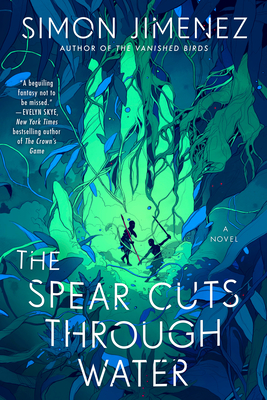 |
|
The Spear Cuts Through Water
Simon Jimenez
I find it hard to describe this unique book and I do not think that any synopsis given will ever do it justice. What I can tell you is that this 500-page fantasy novel takes place over five days and manages to employ first, second, and third-person perspectives (often within the same paragraph) in a way I thought was both ingenious and seamless. The plot primarily covers the journey that two boys take to ferry a god-like entity across a nation, causing the end of an empire. This main storyline is enacted through a play in the unreality space of the Inverted Theater which is being watched by an audience, among whom is a descendant of a main character whose own life is explored in vignettes. There is a masterful use of language and storytelling going on in this book that I cannot contain in a review or recommend highly enough. If anyone ever tells you that no new books tell original stories and that every plot is a retread of a classic, point them to this one. |
| |
|

|
|
|
|
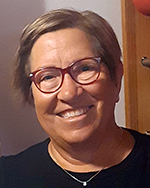
Doni
|
|
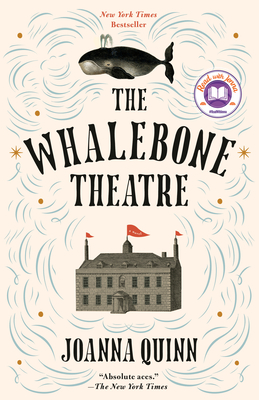 |
|
The Whalebone Theatre
Joanna Quinn
This book ticked a lot of boxes for me; World War II historical fiction, coming of age, quirky English upbringing, strong sibling relationships. The book is set from the late 1920’s through the end of the war and follows three half siblings as they struggle to grow up in their dysfunctional home on the shores of the English Channel.
Oldest sister Cristabel Seagrave is the leader, second child Flossie is the overlooked middle child and Digby, the youngest, is the golden boy and heir.
Cristabel’s passion Is directing plays, and her dramatic presentations take a step up with the arrival of Taras, an immigrant artist, and his entourage, and the body of a whale that was washed up on shore during a storm. (Yes, there really is a whale.)
The arrival of the war sends each character on a different path, and when Digby goes missing, Cristabel goes looking. The book has a full circle quality that was very satisfying to me. |
| |
|
 |
|
James
Percival Everett
James is an eloquent, intelligent black man who hears he is going to be sold by his master. He runs away with the plan to return and free his wife and children from slavery. As he runs, he meets up with a boy who has faked his own death and is on the run, too. James is Jim from The Adventures of Huckleberry Finn.
Incredibly thought provoking, this wryly funny book follows our two heroes down the Mississippi, through adventures and misadventures familiar from the novel Huck Finn. Although action-packed, that is not what stayed with me. What has followed me for a long time since finishing the books is the cruel and endemic racism of those times and the residual and equally cruel racism of ours. |
| |
|
|
|
|
|

Hannah
|
|
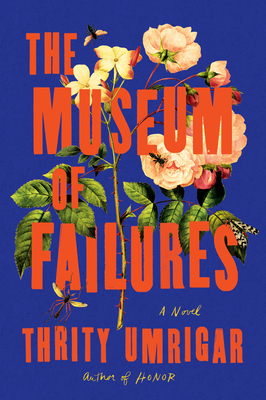 |
|
The Museum of Failures
Thrity Umrigar
Remy has come back to Bombay to arrange to adopt the child of a cousin who has gotten pregnant out of wedlock. Remy lives in Columbus, Ohio with his beloved wife. He has an almost perfect life there: his in-laws, his work, and his friends are all exemplary. Only a child is missing, and this is an opportunity to fill that last void.
However, according to Remy, Bombay is the Museum of Failures. So many things can, and do, go wrong. He hasn’t let his mother know he’s coming; his relationship with her is, to put it mildly, fraught. He discovers that she’s in the hospital, not eating or speaking and perhaps close to death. This is only the first of a series of developments that keep changing his perception of his whole life. There’s one surprise halfway through the book that changes everything. From this point on, I found the novel difficult to put down. |
| |
|
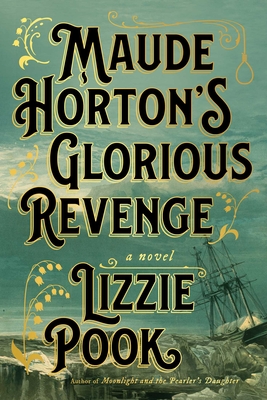
|
|
Maude Horton’s Glorious Revenge
Lizzie Pook
The year is 1851. Maude is driven to find out what happened to her sister, the indomitable Constance who disguised herself as a cabin boy and sailed off to the Arctic. Maude’s grandfather is a chemist: the sisters were raised in his pharmacy. This is a time when public hangings are attended by thousands, the rich and the poor alike. All of these scenes are described as we follow Maude, by nature a quiet, domestic soul, as she embarks on a series of adventures in her quest for revenge. And it is, indeed, a glorious outcome.
The Historic Note at the end is as fascinating as the novel itself. |
| |
|
 |
|
Bel Canto
Ann Patchett
This would be a great book group choice: the kind of novel that makes you want to talk with others about what it means. In a small South American country, the President is paying a great opera star to perform for a rich Japanese businessman’s birthday party. It’s the only way to get him to visit, and it’s hoped that he will love the country and make badly needed investments. However, a small band of revolutionaries sees this as an opportunity to kidnap the President, but he doesn’t attend the party because his favorite program conflicts with it. A mass hostage situation develops: one that couldn’t be more different from the real-life situation in Israel. The book is funny, sweet, and suspenseful. But there’s always the probability that the siege won’t end well.
The book opens slowly while Patchett introduces the main players, but once it gets going it’s a rocket ride. |
|
|
 |
  |
 |
|
|

Lee |
 |

|
 |
The Fellowship of Puzzlemakers
Samuel Burr
Clayton Stumper was left in a hatbox on the steps of the Fellowship of Puzzlemakers, a rather unusual collection of enigmatologists. The members of the household consist of skilled makers of word, mathematical, wooden, jigsaw, and other puzzles. They become his family, with Pippa Allsbrook—the creator and leader of the Fellowship—who provides a maternal figure.
When Pippa passes away, she leaves a final puzzle for Clayton that will reveal his parentage and also prepare him for a life beyond the Puzzlemaker’s commune where he has lived for 26 years.
This is a quirky and charming novel that deals with loneliness, leadership, friendship, and discovering one’s true self. And if you enjoy puzzles, you will particularly enjoy this novel.
Note: this book will be released April 9.
|
| |
|
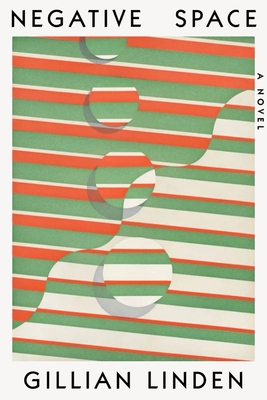 |
|
Negative Space
Gillian Linden
The main character in Negative Space is a part-time English teacher at a New York private school. She is also the mother of two young children and has a husband whose pandemic-era job has him working at home, on calls to various locations in far-flung time zones.
In just 160 pages, covering a single week in her life, we see the narrator deal calmly with school administrators, fellow teachers, parents, children (her own and others), and her husband … each of whom has quirks and challenges and issues that might drive a lesser person over the edge.
If you are looking for a solid plot and clear resolutions, this is not the book for you, but this is some excellent writing from a debut author!
Note: this book will be released April 16
|
| |
|
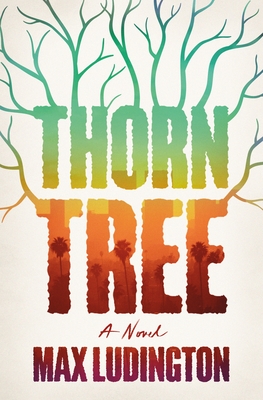 |
|
Thorn Tree
Max Ludington
In the 1970s, after his first stint in prison, Daniel created a magnificent piece of art. That eventually led to a second stretch in prison, after which … with the help of a good friend… Daniel began a new life.
In 2017 he is living in what was once the guest house for the property now owned by a famous actor. She has her own demons and is trying to build a life with her young son Dean and father Jack. Dean and Daniel become quite close.
Jack and Daniel have a casual friendship that turns sour. Jack is a decade older than Daniel, but both of their lives are inexorably tied to the counterculture of the 1960s. I would say, though, that the primary focus of the author (born in 1967) was on the hedonism of that era.
This is a novel that has much darkness: I kept hoping for survival and forgiveness.
Note: this book will be released April 9.
|
| |
|
 |
|
The Secret (Jack Reacher #28)
Lee Child and Andrew Child
Fans of Jack Reacher will not be disappointed by this latest release. My only quibbles were that none of his former associates made an appearance, and he did not spend enough time in diners. On the other hand, this is set in 1992, and he is a captain in the US Army. As such, his associates were far fewer, and he was not eating most of his meals in diners.
Note: the paperback of this book will release April 23.
|
| |
|
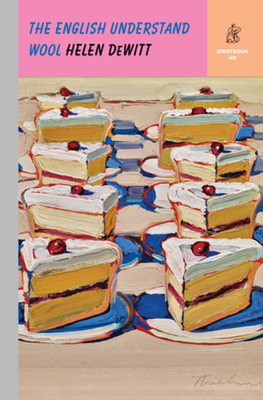 |
|
The English Understand Wool
Helen DeWitt
This is a fine novella, and Helen DeWitt makes great use of the 64 pages.
Marguerite is an exceptionally well-raised 17-year-old. Above all, she has been taught that mauvais ton must be avoided. Mauvais ton is roughly “bad taste” but more emphatic, as something that is never done within the proper circles. For example, one should never ask servants to serve meals (specifically) or work (generally) during Ramadan, so Marguerite’s family takes an extended vacation during and following Ramadan. And, of course, all the servants at their home are paid during the family’s absence.
Marguerite’s circumstances suddenly change, and we are presented with the difference between the truly well-bred and the posers. |
|
| |
|
|

Tim
|
|
|
 |
|
The Tale of Murasaki
Liza Dalby
You may be familiar with the Japanese masterpiece, The Tale Genji, written by Lady Murasaki Shikoku (973–?) That tale is arguably the world’s first real novel. Oh, much older epic poems had been written (Iliad and The Odyssey, or Gilgamesh) but never a lengthy sustained story narrated in prose. (Aside: interesting that the form was begun by a woman living at the Japanese court.) Why did Murasaki first write the story? This is the question that Liza Dalby has attempted to answer in The Tale of Murasaki. It’s a fictionalized biography skillfully crafted by Dalby, who is well versed in Japanese culture and tradition. In the story Dalby explores social customs and interests that we easily recognize as being familiar, as well as some conventions we might find startlingly foreign. For example, the custom of communication through poetry: formally styled, short, oblique, and ubiquitous… very foreign to our contemporary usage and aesthetic. All the while Dalby shows us how The Tale of Genji, became wildly popular as a new literary genre for Murasaki’s place and time. Excellent!
|
| |
|
 |
|
The Ministry for the Future (2nd half of the book)
Kim Stanley Robinson
I mentioned in the February Newsletter) that the TED Book group split the discussion of this book into two meetings of the group. The book was deemed to be important enough to warrant an extended period of time to read, consider, discuss and assess what it has to offer. 1. It provides an excellent description and story of speculative climate science fiction (Cli–Fy, as it’s newly being called). But importantly, maybe even MORE importantly 2.) Multiple digressive expositional essays on: politics, finance, psychology (personal and social), science and scientific theory…. All from the skilled pen and brilliant mind of an author who is knowledgeable about the near future prospects of human existence. And that’s not hyperbole!
|
|
|
|
|
|
|
Would you like to be a guest reviewer?
Email Sally at sally@beagleandwolf.com. |
| |
|
|
|
|
|
— page top —
|
|




 Sally
Sally

















 About 10 years ago, Carey released a children’s series called The Iremonger Trilogy. Since I could, I binged all three while sick. Unfortunately, these books have gone out of print in the U.S., so I ordered used copies. The audio books *are* still available from
About 10 years ago, Carey released a children’s series called The Iremonger Trilogy. Since I could, I binged all three while sick. Unfortunately, these books have gone out of print in the U.S., so I ordered used copies. The audio books *are* still available from  his birth object is a bath plug (yes, really.) Clod’s grandmother was less fortunate; she was presented with a large piece of furniture at birth and so is pretty much confined to her bed/bathroom. Clod has an unusual gift that appears occasionally in the Iremonger family: he can hear birth objects speak their names. Like most wealthy families in that day and age, the Iremongers have hired help. An orphan named Lucy with bright fiery red hair and a mouth as loud (obnoxious) as her hair, is hired by the Iremongers. She does not fit in particularly well, but she does happen upon Clod by accident and the two become friends, which is very much NOT ALLOWED. Lucy is Clod’s only friend who is not a family member. He spends a fair amount of time with his cousin Tummis and tries to avoid another cousin named Moorcus. At times, he is forced to socialize with his betrothed, a cousin named Pinalippy. When a member of the Iremonger family turns 16, s/he marries another Iremonger cousin. Lucy and Clod begin to stumble on some family secrets and the adventure begins……. As always with Carey, his books include his own illustrations. Heap House includes endpapers with a map of the Iremonger Mansion, which is helpful. (The endpapers in book 3 include a family tree, but don’t peek at it until you’ve read the first two books, or you’ll hit some spoilers).
his birth object is a bath plug (yes, really.) Clod’s grandmother was less fortunate; she was presented with a large piece of furniture at birth and so is pretty much confined to her bed/bathroom. Clod has an unusual gift that appears occasionally in the Iremonger family: he can hear birth objects speak their names. Like most wealthy families in that day and age, the Iremongers have hired help. An orphan named Lucy with bright fiery red hair and a mouth as loud (obnoxious) as her hair, is hired by the Iremongers. She does not fit in particularly well, but she does happen upon Clod by accident and the two become friends, which is very much NOT ALLOWED. Lucy is Clod’s only friend who is not a family member. He spends a fair amount of time with his cousin Tummis and tries to avoid another cousin named Moorcus. At times, he is forced to socialize with his betrothed, a cousin named Pinalippy. When a member of the Iremonger family turns 16, s/he marries another Iremonger cousin. Lucy and Clod begin to stumble on some family secrets and the adventure begins……. As always with Carey, his books include his own illustrations. Heap House includes endpapers with a map of the Iremonger Mansion, which is helpful. (The endpapers in book 3 include a family tree, but don’t peek at it until you’ve read the first two books, or you’ll hit some spoilers).






